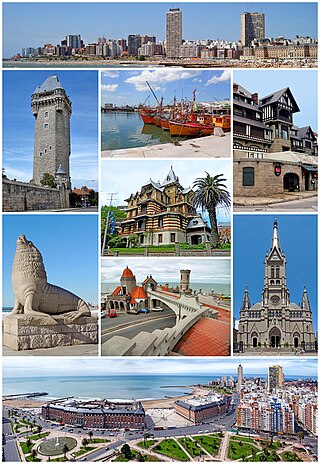
Mar del Plata is a city on the coast of the Atlantic Ocean, in Buenos Aires Province, Argentina. It is the seat of General Pueyrredón district. Mar del Plata is the second largest city in Buenos Aires Province. The name "Mar del Plata" is short for "Mar del Rio de la Plata," and has the meaning of "sea of the Rio de la Plata basin" or "adjoining sea to the (River) Plate region". Mar del Plata is one of the major fishing ports and the biggest seaside beach resort in Argentina. With a population of 682,605 as per the 2022 census [INDEC], it is the 5th largest city in Argentina.

Oliva is a municipality in the comarca of La Safor in the Valencian Community, Spain. To its east lie 10 kilometres of coastline and beaches fronting the Mediterranean Sea, and eight kilometres to the north is Gandia.

Duitama is a city and municipality in the department of Boyacá. It's the capital of the Tundama Province. Duitama is located 195 kilometres (121 mi) northeast of Bogotá, the capital of Colombia and 50 kilometres (31 mi) northeast of Tunja, the capital of Boyacá. In 2023 Duitama had an estimated population of 131,591.

The Historic Centre of Lima is the historic city centre of the city of Lima, the capital of Peru. Located in the city's districts of Lima and Rímac, both in the Rímac Valley, it consists of two areas: the first is the Monumental Zone established by the Peruvian government in 1972, and the second one—contained within the first one—is the World Heritage Site established by UNESCO in 1988, whose buildings are marked with the organisation's black-and-white shield.

The climate in Brazil varies considerably from mostly tropical north to temperate zones south of the Tropic of Capricorn.
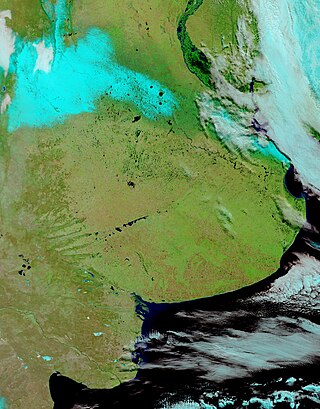
The July 2007 Argentine winter storm resulted from the interaction of an area of low pressure systems across central Argentina and the entry of a massive polar cold snap during the 6–8 July 2007; it was the worst winter of Argentina in almost forty years. Severe snowfalls and blizzards affected the country. In Patagonia, several lakes were frozen. The cold snap advanced from the south towards the central zone of the country during Friday, July 6, continuing its displacement towards the north during Saturday, July 7 and Sunday, July 8. On Monday July 9, the simultaneous presence of very cold air, above the average levels of the atmosphere as in the surface, gave place to the occurrence of snowfalls even in localities where snow is very rare. This phenomenon left at least 46 people dead in Argentina, six in Chile, and 3 in Bolivia.

São Joaquim is a municipality in the state of Santa Catarina, situated in southern Brazil. Its population in 2020 was 27,139 inhabitants. Located in the Planalto Serrano, it lies 136 km from Tubarão, 81 km from Lages and 227 km from Florianópolis. The town is home to a variety of ethnic groups, including Italian, German, Portuguese, Japanese and Afro-Brazilians. There are also many people from other states in Brazil, especially from Rio Grande do Sul.
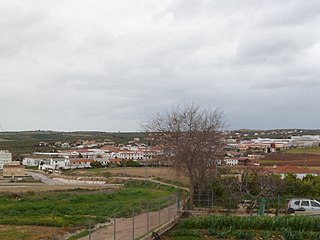
La Rambla is a municipality in the province of Córdoba, Spain.
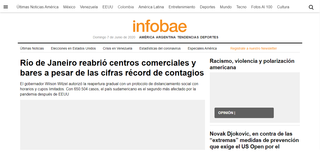
Infobae is an international Argentine online newspaper. It was launched in 2002 by businessman Daniel Hadad, with the original headquarters in Buenos Aires. The company expanded globally with local editions in New York City, Mexico City, Miami, Bogotá, São Paulo, Lima, and Madrid, all led by Marcos Stupenengo. The expansion increased Infobae's international audience, becoming one of the most read Spanish-language online newspapers worldwide.
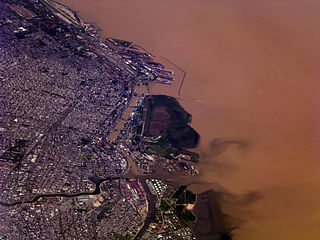
Buenos Aires, the capital of Argentina, has a temperate climate, which is classified as a humid subtropical climate (Cfa) under the Köppen climate classification. Summers are hot and humid with frequent thunderstorms while winters are cool and drier with frosts that occurs on average twice per year. Spring and fall are transition seasons characterized by changeable weather. At the central observatory, the highest temperature recorded is 43.3 °C (109.9 °F), and the lowest temperature recorded is −5.4 °C (22.3 °F).
A tropical night is a term used in many European countries to describe days when the temperature does not fall below 20 °C (68.0 °F) during the nighttime. This definition is in use in countries including the United Kingdom, Greece, Republic of Ireland, Spain, Portugal, Denmark, Sweden, Norway, the Netherlands, Germany, Finland, Lithuania, Latvia, Hungary, Romania, Italy, Serbia, and Croatia. In the United States, by contrast, the term sultry nights is used when the temperature does not fall below 27 °C (80.6 °F) in the Gulf and Atlantic states.

Jeanine Áñez Chávez is a Bolivian lawyer, politician, and television presenter who served as the 66th president of Bolivia from 2019 to 2020. A former member of the Social Democratic Movement, she previously served two terms as senator for Beni from 2015 to 2019 on behalf of the Democratic Unity coalition and from 2010 to 2014 on behalf of the National Convergence alliance. During this time, she served as second vice president of the Senate from 2015 to 2016 and in 2019 and, briefly, was president of the Senate, also in 2019. Before that, she served as a uninominal member of the Constituent Assembly from Beni, representing circumscription 61 from 2006 to 2007 on behalf of the Social Democratic Power alliance.
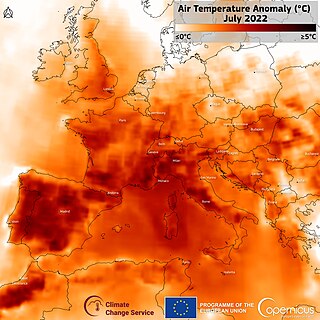
From June to August 2022, persistent heatwaves affected parts of Europe, causing evacuations and killing tens of thousands. These heat waves were the deadliest meteorological events in 2022. The highest temperature recorded was 47.0 °C (116.6 °F) in Pinhão, Portugal, on 14 July.

In mid-January 2022, the Southern Cone had a severe heat wave, which made the region for a while the hottest place on earth, with temperatures exceeding those of the Middle East. This extreme weather event was associated with the Atlantic anticyclone, a particularly intense La Niña phenomenon in the Pacific Ocean, and the regional effects of climate change.

Cold Winter Sun is a 2004 Spanish drama film directed and written by Pablo Malo which stars Unax Ugalde and Marisa Paredes alongside Javier Pereira, Marta Etura, Raquel Pérez, and Andrés Gertrúdix.

Following the ousting of president of Peru, Pedro Castillo on 7 December 2022, a series of political protests against the legitimate government of president Dina Boluarte and the Congress of Peru occurred. The demonstrations lack centralized leadership and originated primarily among grassroots movements and social organizations on the left to far-left, as well as indigenous communities, who feel politically disenfranchised. Castillo was removed from office and arrested after announcing the ilegal dissolution of Congress, the intervention of the state apparatus, and the forced establishment of an "emergency government", which was characterized as a self-coup attempt by all government institutions, all professional institutions, and mainstream media in Peru while Castillo's supporters said that Congress attempted to overthrow Castillo. Castillo's successor Dina Boluarte, along with Congress, were widely disapproved, with the two receiving the lowest approval ratings among public offices in the Americas. Among the main demands of the demonstrators are the dissolution of Congress, the resignation of Boluarte, new general elections, the release of Castillo, and the formation of a constituent assembly to draft a new constitution. It has also been reported that some of the protesters have declared an insurgency in Punos's region. Analysts, businesses, and voters said that immediate elections are necessary to prevent future unrest, although many establishment political parties have little public support.

Cyclone Yaku was an unusual low-pressure system in the far Southeastern Pacific that impacted Ecuador and northern Peru in early March 2023. It has been described by the National Service of Meteorology and Hydrology of Peru (SENAMHI) as an "unorganized tropical cyclone" not seen since 1983 or 1998. In Peru, the system killed at least eight, affected 49,000 people and destroyed thousands of homes.
















